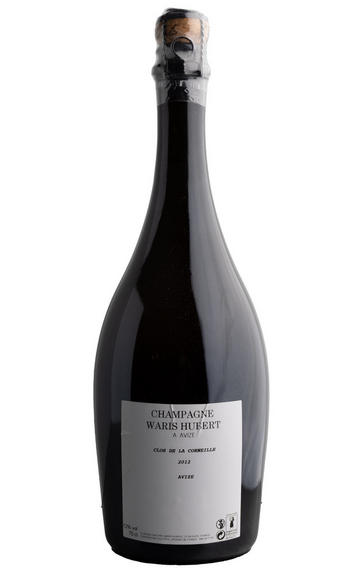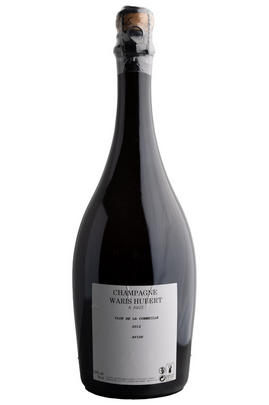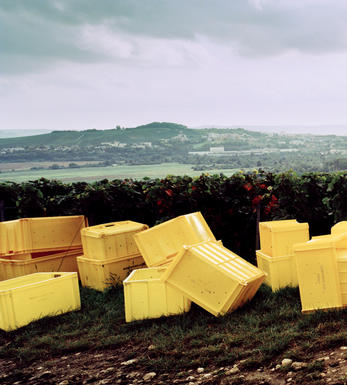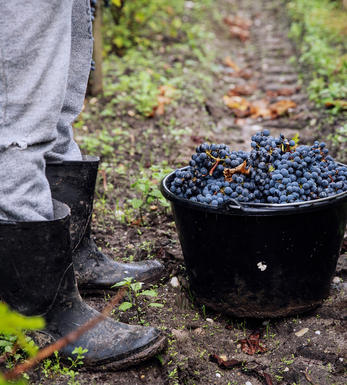
2012 Champagne Waris Hubert, Clos de la Corneille, Grand Cru, Avize, Extra Brut

About this WINE

Champagne Waris Hubert
An independent family business, Champagne Waris Hubert is run by Olivier Waris, his wife Stephanie, and their three children. The family have a long history of farming in the area, but only started making Champagne in 1998. Now, they hold 18 hectares that are all in organic conversion and will achieve certification in 2023.
With Olivier, there is no recipe or status quo. Individual parcels and lieux-dits are vinified differently depending on the vintage, creating a broad spectrum of wines. The heart of their estate lies in the legendary Avize terroir, but they also farm Grand Cru vineyards across Oger and Cramant, alongside some Premier Cru sites in neighbouring regions.
As a relative newcomer in this historic region, Waris Hubert has not been bound by the constraints of market expectations or legacy. Instead, the domaine has been able to instigate change and leapfrog the quality of many famous names, in a relatively short period of time. Olivier combines slow cold fermentations, low sulphur use and extended lees ageing to create an artisan range of Champagnes that are richly textured and expressive, combining the very best of modernity and tradition.

Brut Champagne
Brut denotes a dry style of Champagne (less than 15 grams per litre). Most Champagne is non-vintage, produced from a blend from different years. The non-vintage blend is always based predominately on wines made from the current harvest, enriched with aged wines (their proportion and age varies by brand) from earlier harvests, which impart an additional level of complexity to the end wine. Champagnes from a single vintage are labelled with the year reference and with the description Millésimé.
Non-vintage Champagnes can improve with short-term ageing (typically two to three years), while vintages can develop over much longer periods (five to 30 years). The most exquisite and often top-priced expression of a house’s style is referred to as Prestige Cuvée. Famous examples include Louis Roederer's Cristal, Moët & Chandon's Dom Pérignon, and Pol Roger's Cuvée Sir Winston Churchill.
Recommended Producers : Krug, Billecart Salmon, Pol Roger, Bollinger, Salon, Gosset, Pierre Péters, Ruinart

Champagne blend
Which grapes are included in the blend, and their proportion, is one of the key factors determining the style of most Champagnes. Three grapes are used - Pinot Noir, Chardonnay and Pinot Meunier.
26% of vineyards in Champagne are planted with Chardonnay and it performs best on the Côtes des Blancs and on the chalk slopes south of Epernay. It is relatively simple to grow, although it buds early and thus is susceptible to spring frosts. It produces lighter, fresher wines than those from Burgundy and gives finesse, fruit and elegance to the final blend. It is the sole grape in Blancs de Blancs, which are some of the richest long-lived Champagnes produced.
Pinot Noir accounts for nearly 40% of the plantings in Champagne and lies at the heart of most blends - it gives Champagne its body, structure, strength and grip. It is planted across Champagne and particularly so in the southern Aube district.
The final component is Pinot Meunier and this constitutes nearly 35% of the plantings. Its durability and resistance to spring frosts make the Marne Valley, a notorious frost pocket, its natural home. It ripens well in poor years and produces a soft, fruity style of wine that is ideal for blending with the more assertive flavours of Pinot Noir. Producers allege that Pinot Meunier lacks ageing potential, but this does not deter Krug from including around 15% of it in their final blends.


Buying options
Add to wishlist
Description
This rare and exclusive Clos is nestled above the domaine above the town of Avize. 2012 marks its introduction into the Waris Hubert range, which marries the extraordinary quality of the vintage—50% fermented and matured in barrique, 50% in inox tank.
This rich and complex Champagne takes its position amongst the finest Clos in Champagne. The nose is seductive, with a distinct crepe suzette character. There is autumnal spice on the palate, and foam surges over golden apple and roasted stone fruit, typical of Avize village, which added richness to the 2012 character. Mineral, poised and brimming with energy.
Drink 2023 - 2040+
Davy Żyw, Senior Buyer, Berry Bros. & Rudd (September 2023)
wine at a glance
Delivery and quality guarantee